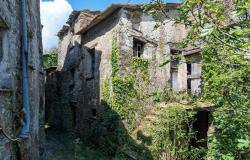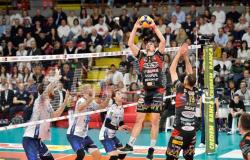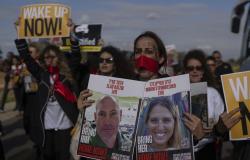Listen to the audio
…loading…
The Vicenza native Giovanni FerrareseDelegate of the Sixth Section of the Venetian Alpine and Speleological Rescue, coordinated the rescue operations from outside, from the base camp Simone Poletto, the 41-year-old speleologist from Schio injured in the Pisatela cave in Monte di Malo last Saturday, March 23. An intervention that he defines as “complex”: sent inside the system of caves and fissures for about an hour, together with three other speleologists, all from the Alto Vicenza area, Poletto together with the rescuers took four and a half hours to get back to the surface.
“The Pisatela – says Ferrarese – is a sub-horizontal cave, not very deep but very extensive and connected to Buso della Rana, together with which it forms a system that extends over 45 kilometres. Inside, narrow spaces alternate with flooded sections and large areas such as rooms and halls. From the initial narrow tunnel at the entrance you arrive at a series of small vertical wells and then the progression continues with narrower rooms in which you also have to crawl, but there are also large rooms. It is a very popular cave in its initial part.”
What type of intervention was the one on Saturday?
“It was particularly challenging because the scenario was complex and the news that had reached us initially through the 118 alert suggested a situation that would not be easy for our teams to deal with. In the end everything was resolved for the best, even in a relatively short time for what can normally be a speleological rescue. About forty Alpine and Speleological Rescue operators were involved, from 1pm, when the alarm went off, to midnight, when the injured man came out of the mouth of the cave and we then proceeded to recover all the equipment. The majority were technicians from the Sixth Speleological Delegation of the Cnsas, with the support of some colleagues from Trentino, Alto Adige and Friuli Venezia Giulia, but the dismantling technicians from other regions of Italy were also ready and alert, in in the event that it was necessary to use explosives to widen the narrowest sections of the tunnels to allow a possible stretcher to pass through”.
Listen to “The cave rescue, with Michela Zambelli and Giovanni Ferrarese” on Spreaker.
How deep did the rock detachment that caused the injuries occur?
“About an hour’s progression from the entrance and therefore not very far, but beyond a very challenging stretch characterized by a meander, there was a flooded tunnel, about a hundred meters long, which had to be tackled with adequate equipment. Having received the request for help and arrived on site, as first aid we reached the injured person. It was 2.30pm and immediately afterwards we began work on laying the telephone cable, which was essential for communicating with the base camp outside the cave, in order to have clear information on his health situation and the condition of the other companions as soon as possible. who were with him. After the team of telephone operators, one of our healthcare teams entered the cave, made up of a doctor and a nurse, specialized in rescue in underground environments. They brought with them all the medical supplies necessary for a first aid activity and carried out an assessment of his health conditions (hit in the head, he immediately lost consciousness but then recovered, although in a state of confusion), ed) to establish the recovery methods, communicated externally via the telephone line, which allowed a consultation with another health team who was outside. It was therefore considered that recovery could be carried out without the use of a stretcher and this was an important choice, which then influenced the success of the operation and also the much quicker timing than we thought at the beginning.”
What time did the exit from the cave begin?
“Around 7.30pm and the first section, the most challenging and wet one, was overcome by dressing the injured man in a dry suit. They thus arrived in a room where a medical curtain had been installed to warm the injured person and provide him with some treatment. There it was assessed that it was possible to proceed outside without the aid of a stretcher, while in the meantime his two companions, who had remained with him until then, were accompanied outside. They came out in good condition around 8.30pm. In the meantime, however, given the type of cave and the uncertainty about the conditions of the wounded, we had proceeded to activate the protocol envisaged in these cases, which envisaged, in agreement with the prefectures of Verona and that of Vicenza, the supply of explosives to be used in case of rescue in underground environments. The entire chain was activated which involved the mayor of Monte di Malo, whom we thank for his great collaboration, and the carabinieri of the Schio command, who were invaluable in being able to recover the explosive from the warehouse in Verona and transport it, escorted by police at the scene of the accident. In the end it was not necessary to use it because the assessment made by the doctors present in the cave was to proceed without using the stretcher. However, the explosive remained there available until the end of the operation, in case there was a worsening of the injured person’s health conditions which required the use of a stretcher and therefore the widening of some sections of the route”.
How was the ascent?
“In the horizontal sections the injured person was accompanied by our technicians, while in the vertical shafts ropes were used. At midnight he came out, we handed him over to the Suem ambulance and the task of our technicians ended with the recovery of all the material that had remained inside the cavity. The logistical support provided by the firefighters was obviously invaluable, just as the role of the civil protection of the Alto Vicenza area was important, which quickly set up the base camp. Here, together with the deputy delegate and the vice station master of Vicenza, we coordinated all the operations and managed the material necessary for those entering the cave. The scenario that initially emerged was much more worrying and suggested a much longer recovery.”
An accident during a cave expedition can always happen. What advice needs to be reiterated?
“That of having adequate technical and psychophysical preparation, as well as being precisely informed about the cave you want to explore. Pay close attention to the weather forecast, especially in caves such as Pisatela, which have significant water flows and which depend on external conditions. Furthermore, it is important to always leave very clear information to your family about where you are going and in what part of the cave, as well as about the reasonable exit time. When you go into a cave there must be at least four of you, great attention must be paid to the conditions of the ropes and fixed armaments and in the unfortunate event of an accident it would always be better, if possible, to go out in two to raise the alarm directly to 118, giving all possible information on the cave and the time of the accident, on the people involved and above all always remaining available on the telephone from which you are calling because the information that the rescuers need to recover is very precious and must be given by who raises the alarm.”







